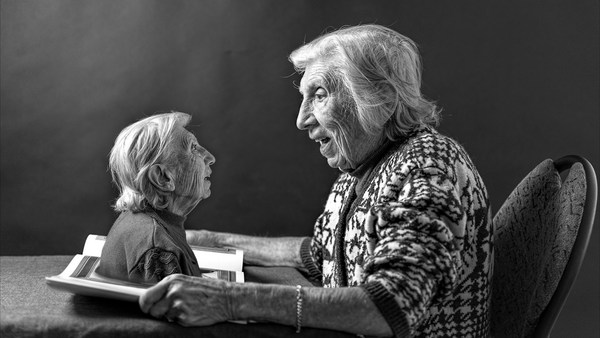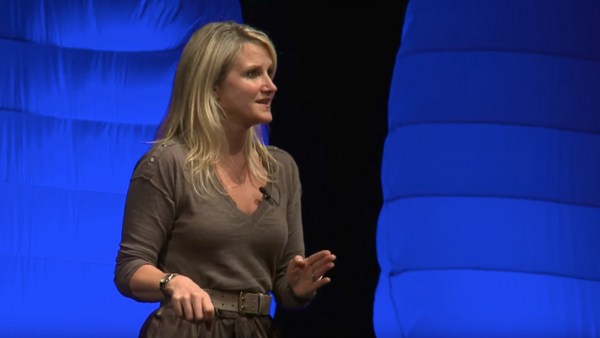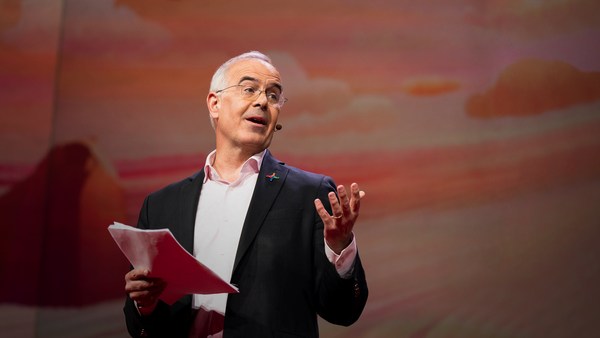This is the Hogeweyk. It's a neighborhood in a small town very near Amsterdam, in the Netherlands. There are 27 houses for six, seven people each. There's a small mall with a restaurant, a pub, a supermarket, a club room. There are streets, alleys, there's a theater. It actually is a nursing home. A nursing home for people that live with an advanced dementia and that need 24-7 care and support.
Dementia is a terrible disease, and we still don't have any cure for it. It's getting to be a major problem in the world, for the people, for the politicians, for the world -- it's getting to be a big problem. We see that we have waiting lists in the nursing homes. Most people that come to the nursing homes with dementia are women. And that's also because women are used to taking care of people, so they can manage to take care of their husband with dementia, but the other way around is not so easy for the gentlemen.
Dementia is a disease that affects the brain. The brain is confused. People don't know anymore what the time is, what's going on, who people are. They're very confused. And because of that confusion, they get to be anxious, depressed, aggressive.
This is a traditional nursing home. I worked there in 1992. I was a care manager. And we often spoke together about the fact that what we were doing there was not what we wanted for our parents, for our friends, for ourselves. And one day, we said, "When we keep on saying this, nothing is going to change. We are in charge here. We should do something about this, so that we do want to have our parents here."
We talked about that, and what we saw every day was that the people that lived in our nursing home were confused about their environment, because what they saw was a hospital-like environment, with doctors and nurses and paramedics in uniform, and they lived on a ward. And they didn't understand why they lived there. And they looked for the place to get away. They looked and hoped to find the door to go home again. And we said what we are doing in this situation is offering these people that already have a confused brain some more confusion. We were adding confusion to confusion. And that was not what these people needed.
These people wanted to have a life, and the help, our help, to deal with that dementia. These people wanted to live in a normal house, not in a ward. They wanted to have a normal household, where they would smell their dinner on the stove in the kitchen. Or be free to go to the kitchen and grab something to eat or drink. That's what these people needed. And that's what we should organize for them.
And we said we should organize this like at home, so they wouldn't live with a group of 15 or 20 or 30, like in a ward. No, a small group of people, six or seven, family-like. Like living with friends. And we should find a way to select people based on their ideas about life so that they did have a good chance to become friends, when they lived together. And we interviewed all the families of the residents about "what is important for your father," "what's important for your mother," "what is their life like," "what do they want." And we found seven groups, and we call them lifestyle groups.
And for instance, we found this formal lifestyle. In this lifestyle, people have a more formal way of interacting with each other, a distant way. Their daily rhythm starts later in the day, ends later in the day. Classical music is more heard in this lifestyle group than in other lifestyle groups. And their menu, well, is more French cuisine than traditional Dutch.
(Laughter)
In contrary to the craftsman lifestyle. That's a very traditional lifestyle, and they get up early in the morning, go to bed early, because they have worked hard their whole life, mostly with their hands, very often had a very small family business, a small farm, a shop, or like Mr. B, he was a farmhand. And he told me that he would go to his work every morning with a paper bag with his lunch and one cigar. That one cigar was the only luxury he could afford for himself. And after lunch, he would have that one cigar. And until the day he died in the Hogeweyk, he was in this little shed, every day, after lunch, to smoke his cigar.
This is my mother. She's of the cultural lifestyle, she's been living in the Hogeweyk six weeks now. And that lifestyle is about traveling, meeting other people, other cultures, interest in arts and music. There are more lifestyles. But that's what we talked about, and that's what we did.
But that's not life in a house with a group of people, like-minded people, your own life, your own household. There's more in life, everybody wants fun in life and a meaningful life. We are social animals -- we need a social life. And that's what we started. We want to go out of our house and do some shopping, and meet other people. Or go to the pub, have a beer with friends. Or like Mr. W -- he likes to go out every day, see if there are nice ladies around.
(Laughter)
And he's very courteous to them, and he hopes for smiles and he gets them. And he dances with them in the pub. It's a feast every day.
There are people that would rather go to the restaurant, have a wine with friends, or lunch or dinner with friends and celebrate life. And my mother, she takes a walk in the park, and sits on a bench in the sun, hoping that a passerby will come and sit next to her and have a conversation about life or about the ducks in the pond.
That social life is important. It means that you're part of society, that you belong. And that's what we people need. Even if you're living with advanced dementia.
This is what I see from my office window. And one day, I saw a lady coming from one side, and the other lady from the other side, and they met at the corner. And I knew both ladies very well. I often saw them walking around outside. And now and then, I tried to have a conversation with them, but their conversation was ... rather hard to understand. But I saw them meeting, and I saw them talking, and I saw them gesturing. And they had fun together. And then they said goodbye, and each went their own way. And that's what you want in life, meeting other people and being part of society. And that's what I saw happening.
The Hogeweyk has become a place where people with very advanced dementia can live, have freedom and safety, because the professionals working there and the volunteers working there know how to deal with dementia. And the professionals know how to do their professional work in a way that it fits in a natural way in the life of our residents. And that means that the management has to provide everything those people need to do their work. It needs a management that dares to do this. To do things differently than we always have done in a traditional nursing home.
We see that it works. We think this can be done everywhere, because this is not for the rich. We've been doing this with the same budget as any traditional nursing home has in our country. We work only with the state budget.
(Applause)
Because it has to do with thinking different, and looking at the person in front of you and looking at what does this person need now. And it's about a smile, it's about thinking different, it's about how you act, and that costs nothing. And there's something else: it's about making choices. It's about making choices what you spend your money on. I always say, "Red curtains are as expensive as gray ones."
(Laughter)
It's possible, everywhere.
Thank you.
(Applause)





